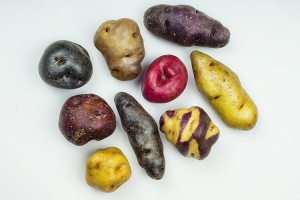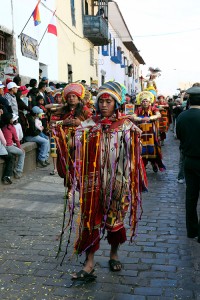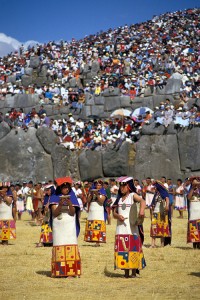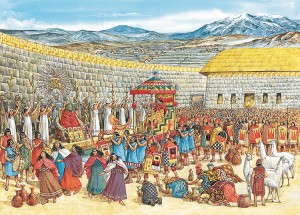Peru’s Potato Park
Monday, June 15th, 2020In Peru, a unique conservation effort is taking place near the city of Cusco at the Parque de la Papa (Park of the Potato). Located outside the Andes Mountains town of Pisac (or Pisaq), the park celebrates the Peruvian potato, of which there are some 3,000 varieties. The park is also a living tribute to the cultural heritage of the region’s indigenous (native) communities.
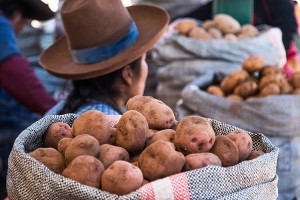
Potatoes originated in the highlands of Peru and nearby areas of the Andes Mountains. Credit: © Shutterstock
The Parque de la Papa is administered and farmed by the local Amaru, Chawaytire, Pampallacta, Paru Paru, and Sacaca indigenous communities. Within its grand boundaries—the park covers over 22,000 acres (9,000 hectares)—are grown more than 1,300 varieties of potato native to that area of the Andean highlands. Many potato varieties in the park are found nowhere else in the world. The cultivation of such rare potatoes helps ensure their existence for future generations, as does the park’s sharing of precious seeds with the Svalbard Global Seed Vault, a long-term seed storage facility in Norway.
The Parque de la Papa demonstrates the ability of potatoes to survive in the region’s harsh but changing conditions. The park sits in the cold and thin air at an altitude of 12,000 feet (3,700 meters) above sea level. Climate change is bringing warmer temperatures, however, forcing farmers still higher to reach the optimum growing environment for some potato varieties.
Visitors to the park learn about traditional potato cultivation, harvesting, cooking, and storage. They are also treated to delicious local potato dishes. Hiking trails allow people to walk off their meals while also providing panoramic views of the Andean highlands. The Parque de la Papa features a variety of local crafts and products—from cosmetics and teas to medicines and textiles—made from potatoes and other plants native to the area.
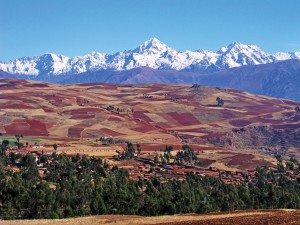
A patchwork of potato fields covers this section of the Altiplano, a cold plateau in the Andean highlands. Credit: © Roux Frederic, Shutterstock
The potato originated in the Andes Mountains of South America. Scientists believe cultivated potatoes came from a species that first grew around Lake Titicaca, in what are now Bolivia and Peru. People living there and in surrounding areas were growing potatoes long before Spanish explorers arrived in the early 1500′s. Potatoes were then introduced to Europe and other parts of the world. The nutritious potato became a vital food crop in many regions.

